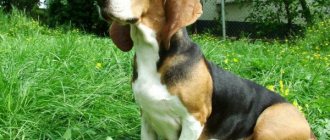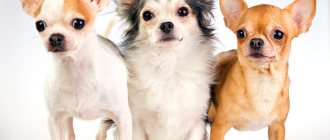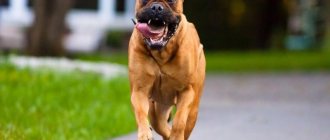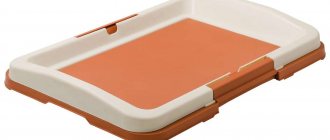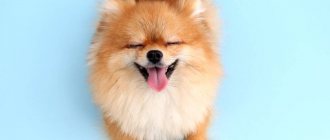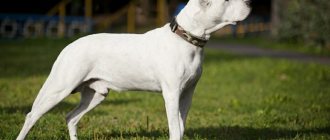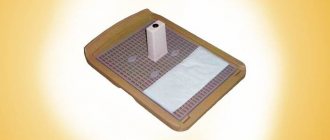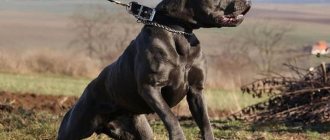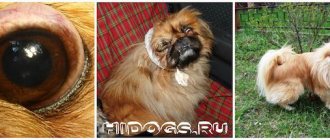Every animal lover has dreamed of having a dog in the house since childhood. And if you decide to buy a pet, then a small dog will be a smart decision. The advantages of small dogs are obvious: they don’t take up much space, they’re easier to care for, you need to feed less, and they’re cute. In this article you will see a list of small and furry representatives of the dog community.
Pomeranian Spitz
This mischievous and fluffy baby will keep you company in every activity. It reaches 3.5 kg in weight, the body is quite muscular and strong. The Pomeranian has very long hair and it does not adhere to the body on the body and neck. The main feature of the Spitz is the presence of a large collar. Coat color varies from black to sandy-cream shades, white is very rare. Spitz have short, strong limbs.
Pomeranians love active recreation and cope well with acclimatization, are very attentive to their owner and are able to detect the slightest changes in his state of mind.
Spitz dogs must be handled very carefully; if they are neglected, they can become irritable and angry.
Papillon
Cute Papillons win the hearts of dog lovers with their outstanding appearance and docile nature. Due to the special shape of their ears, they are called butterfly and French flower. The main advantage of the breed, in addition to its bright appearance, is its insane devotion to its owner and friendly attitude towards others. Fidgety and playful, the Papillon will always find something interesting to do. He enjoys running after flying dragonflies and mice scurrying in the grass. An “eternal child”, he does not succumb to despondency and boredom even in old age.
Read about Papillons here.
Volpino Italiano
Does not exceed 4.5 kg in weight, the color is always snow-white. It belongs to the Spitz-type species and resembles a fox in appearance. It has long fur, eyes small and round, dark in color.
Volpino Italiano is considered an Italian Spitz and has long served as a symbol of wealth for rich ladies. They decorated them with ivory bracelets as a sign of affection.
Representatives of the breed have an excellent character. Volpino is easy to train and lends itself well to training. They are attached to their owners and do not tolerate loneliness, they are very kind, but they always try to become leaders in relation to other pets.
Afghan Hound
A fluffy breed like the Afghan Hound is one of the oldest long-haired breeds. Outwardly, Afghan hounds are rather aristocratic: they have long paws and literally shining satin hair, which creates the effect of bell-bottom trousers at the tips of their paws. The peculiarities of the head position and the same aristocratic posture create the impression of extraordinary sophistication.
When the Afghan Hound runs, its thick fur flutters in the wind like a magical robe. This long-haired breed often has an elongated, wedge-shaped head. The muzzle is emphasized and elongated. The eyes resemble triangles and are set obliquely.
Bichon Frize
The name of the breed is translated from French as “curly lap dog.” More recently, the Bichon Frize was saved from extinction. These lovers of being the center of attention have snow-white, highly curly fur and a bushy tail. Height does not exceed 30 cm.
Bichon Frizes do not shed and are odorless. A distinctive feature is white wool. The breed often has genetically determined inflammation of the eyes and knees. Therefore, they need to be carefully looked after and checked regularly by a veterinarian. Bichon Frizes are always cheerful and cheerful and get along well with other animals and children.
Small white dog breeds
These puppies come with fluffy, longer or shorter hair. Below are 14 different small dog breeds that can make great indoor companions for your home, depending on your exercise requirements and grooming capabilities.
Our list includes a Pomeranian, an Esky, a Maltese, and a white Chihuahua. It seems that smaller dogs will shed less. Perhaps, but you still need to keep lint rollers on hand because let's face it...white wool is white wool.
Lhasa Apso
This breed was bred by Tibetan monks specifically to guard monasteries. Lhasa Apsos have very long, hanging coats that require careful and regular grooming. They weigh up to 8 kg. Their tail is curled into a ring. Representatives of the breed have an elongated body and cat-like round paws.
Lhasa Apsos are amazingly intelligent and highly trainable. Lhasians are devoted to their owner and family and love to spend time with them. These dogs are cheerful and balanced, but they are hostile towards strangers.
It is better not to disturb representatives of this breed when they are not in the mood; they may snap or even bite.
Pug
A popular breed among aristocrats in England and Holland. For some time they were used as guard dogs. Pugs are dogs that can snore and wheeze, especially when they sleep. This breed of dog is an excellent eater, so try to make sure that your pet does not overeat. They are a friendly and playful breed, but they can be jealous of their owners.
Cockapoo
The cockapoo is a cross between a cocker spaniel and a poodle. It was bred by American breeders to get rid of skin problems found in cocker spaniels. Purpose – companion dog, belongs to decorative dogs. The Cockapoo is a gentle and loyal friend who loves spending time with his family. He is easy to train and very smart. If raised properly, he will be friendly to children and other pets.
The cockapoo's coat is short and wavy. She is brushed as needed and visits the groomer once a year. You need to keep a close eye on your ears, which are prone to infections.
Features of caring for fluffies
General recommendations for keeping long-haired dogs do not differ from other breeds. The animal needs to be walked regularly, keep its ears, nose, eyes clean, have its claws trimmed, and feed it with balanced food. But you need to monitor your pet’s fur more carefully:
- comb daily with special combs;
- periodically carry out grooming;
- bathe twice a month using dog shampoo;
- monitor the general condition of the hair and skin.
Shaggy dogs are very popular among animal lovers, as they evoke the most positive emotions. However, long-haired breeds are primarily a big responsibility. When deciding to buy a furry cat, you need to be prepared to pay a lot of attention to it every day.
Recommended Posts
38 best dog breeds for apartments according to reviews from breeders and owners
20 best guard dog breeds with names and photos: choice of dog handlers
Review of the 30 most beautiful dog breeds in the world with names and photos
Top 10 fastest dogs in the world
The best hunting helpers: TOP-30 hound dog breeds with names and photos
TOP 40 best hunting dog breeds with names, descriptions and photos
Japanese Chin
The Japanese Chin is truly a royal dog. For several centuries it was kept in the courts of Japanese emperors. One day one of the emperors recognized these little ones as sacred animals. In 1853, a pair of chins was brought to England as a gift for Queen Victoria.
Due to its love for chewing food for a long time, the Japanese Chin is called the “chewing dog.” These kids are very hardy, love children and are ready to keep their owner company.
South Russian Shepherd
The largest white fluffy dog, the South Russian Shepherd, has become a serious achievement in domestic dog breeding. Bred during the Soviet era, it eclipsed other large furry breeds with its beauty. Not devoid of willfulness, the South Russian Shepherd is difficult to train, but if the owner is able to competently build relationships, he will be unquestioning in obedience and selfless in protection. No kindness towards strangers and boundless love for the owner.
Shih Tzu
The Shih Tzu is one of the oldest dog breeds. Mentions of lion dogs have been found since the reign of the Chinese Empire. The breed is not so popular in the world due to the fact that it was exported from China only in 1930.
Shih Tzus can weigh up to 7 kg and have a very long coat of any color.
Shiu Tzu is translated from Chinese as “one who gives happiness” and that’s exactly what it is.
Dogs of this breed try their best to please their owner and are always ready to protect. They are quite patient, but do not like violations of personal space too much.
French Bulldog
The breed originated in France in the 17th century. Previously, they were bred in English factories to fight rats. These dogs are very friendly and active, and are also very attached to their owner. This is an excellent watchman who is not particularly picky about care. The stubborn French Bulldog needs sensitive training from childhood. This breed does not like loneliness and extreme heat.
We also recommend reading:
The largest dog breeds What is domestication in animal husbandry Why you should get a cat: reasons voiced by scientists Euthanasia of animals
Norwich Terrier
At the withers they do not exceed 28 cm and weigh 5 kg. Norwich is the result of crossing red and black terriers. As a result, it has such an interesting color: there are individuals of both black and wheat shades. The dogs are quite strong for their size.
The Norwich Terrier needs regular trimming and combing of its coat. It is unpretentious in maintenance and does not shed. Amazingly smart and cunning, needs little but regular physical activity. A distinctive feature of terriers is their energy.
How to care for dogs with fluffy coats
The key feature of such breeds is a thick coat with a relatively small amount of coarse guard hairs and a rich downy undercoat. Because of this, such dogs have a tendency to form tangles. Clumps of lumps not only spoil the appearance of the animal, but also cause pain and can provoke a deterioration in the general condition. Mats interfere with normal skin ventilation. As a result, moisture dries out more slowly, sebum accumulates, creating an ideal environment for the development of bacteria. Itching makes the situation worse. The dog tries to remove the hairball, but more often than not it simply injures itself with its claws. Such open wounds become easily infected.
Frequent brushing with a Furminator is not advisable for dogs with a minimal amount of guard hair (Spitz)
To prevent the occurrence of tangles, furry dogs are combed at least once a week with a slicker brush or furminator. They are the ones who can rid your pet of dead fluff. It is important to choose a tool with teeth of the appropriate length, otherwise it will not capture part of the fur coat. During molting, the frequency of procedures is increased to 2 times a week. Additionally, you can use special brush-mittens every day.
The glove gently removes dead hair, so it can be used regularly
Hair cutting of furry dogs is prohibited. This does not protect the companion from the heat: the pet’s main “armor” is its fur. In addition, the procedure inevitably deteriorates the quality of the fur coat. Normally, new guard hair grows when the old one falls out. After cutting, a stump remains, which does not always fall out on its own. As a result, suppuration occurs. New guard hairs cannot break through. Their number decreases, there is more fluff, which begins to tangle even more.
Coton de Tulear
Belongs to the Bichon group and takes its origin from the island of Madagascar. The breed got its name due to the structure of its coat. It is snow-white and long and looks like cotton wool or cotton. Unlike other types of Bichons, representatives of the breed are allowed champagne and black spots in their coloring.
Coton de Tulear are very helpful and intelligent dogs, ready to entertain their owner at any time to please him. They are very perky and charming, it is impossible not to love them. Caring for them requires regular brushing of the coat and daily active walks and games.
Pros and cons of small dogs
Little cute Spitz
Any breed has both pros and cons. The advantages of small dogs include:
- Possibility of living in a small apartment. Large dogs (for example, Labradors) in a small living space will be constrained by a lack of free space. Small dogs will feel great even in a one-room apartment.
- Walking at odd hours. The dogs are walked several times a day, when there is a need to go to the toilet. Little four-legged friends can easily get by with a diaper or newspaper on the balcony, and some can even be trained to use a litter tray.
- Reduced food costs. The truism is that the larger the dog, the more food it needs to maintain strength in the body.
- They have less odor and fur. The same rule applies here as in the previous paragraph: everything fits to size.
- Mobility. A small dog does not have to be left at the entrance to the store. You can pick him up and no one will mind, because he doesn’t bother anyone.
The disadvantages of small breeds include:
- Careful care. Any pet needs to be looked after, because this is a responsibility that the owner takes on his shoulders. However, such decorative dogs need to be looked after using the services of groomers (this is especially familiar to owners of furry dogs). A specialist must trim overgrown hair and claws in a timely manner, and a veterinarian must promptly identify problems in the functioning of the pet’s body.
- Fragility. Regular visits to the veterinarian are important in keeping such breeds. Typically, the smaller the dog, the more susceptible it is to various types of diseases.
- Loud barking. If the puppy is not taught to bark frequently and loudly, the neighbors may not like it very much.
Toy poodle
Used as a companion dog, but was originally bred as a game hunter. The toy poodle is a tiny dog, reaching 28 cm at the withers, and its weight usually does not exceed 10 kg. Beneath the curly coat lies a strong body and limbs.
Dogs are endowed with good health and adaptability to new environmental conditions. Curly coat requires special care: daily combing and trimming once every month and a half.
Toy Poodles are beautifully built and very energetic. The character is even, but they love to bark and are impressionable. Therefore, when purchasing a dog of this breed, you will have to put up with constant loud barking.
Bobtail (Old English Sheepdog)
Many people believe that bobtails are the fluffiest dogs on Earth. Indeed, the fur covers the dog’s body so much that its outlines are not visible underneath it. In Great Britain the breed is called the Old English Sheepdog. The very name “bobtail” is associated with a short and thick tail, which is docked in the first days of a puppy’s life. The dog has a balanced character, is devoted to its owner, loves long walks and active games.
Read more about the Old English Sheepdog.
Maltese
Belongs to the Bichon species. It is impossible to say with certainty that the birthplace of the lapdog is Malta; mentions of them were found in the ancient chronicles of China and the Philippines. Representatives of the breed were adored by rulers and high society. By the end of the 19th century, people were almost faced with the disappearance of the Maltese lapdog, but through the efforts of breeders they were preserved.
The main feature of the Maltese is its long, silky coat; it must be snow-white and never mat. Has a very fluffy high tail. They are susceptible to tooth loss and breathing and skin problems, and do not tolerate heat and dampness well. Therefore, they require constant dental care and regular, careful combing of the coat. They love to be the center of attention.
Samoyed
The Samoyed or Samoyed Laika is an amazing breed. Living in the conditions of the Russian North, these dogs have become reliable and skillful helpers for people. Among the eternal snow, the white fluffy husky looks organic and natural. She guards reindeer herds, rides in a harness, hunts wild animals and protects little men. The civilized world did not ignore the Samoyed either. City dwellers value the dog for its external attractiveness and easy-going disposition.
Read more about the Samoyed.
Pekingese
Among the breeds of small fluffy dogs, the Pekingese occupies a special place. Chinese legend says that the breed is the result of a relationship between a lion and a monkey. From its “ancestors” the Pekingese inherited a flexible, lively mind and a very non-standard appearance.
The cuteness of these snub-nosed kids is simply off the charts, but behind such a funny appearance hides a real gentleman with self-esteem. Sometimes this feeling is even slightly exaggerated, so the Pekingese will not tolerate being squeezed and will not rush to do what you told him.
The breed is perfect for apartments with European-quality renovation. A true Pekingese will never allow himself to spoil any of his owner’s property, not because he loves his owner so much and does not want to upset him, but because he has the blood of aristocrats in him and such behavior is completely unacceptable for a noble dog. The aristocrat is indifferent to walks and physical activity.
The Pekingese gets along well with cats, rodents and birds, but cannot stand other dogs. Perhaps the “Napoleon complex” is at play in this little one, so he is aggressive even towards his largest brothers.
Karelo-Finnish Laika
This breed differs from other brothers in the relatively small amount of hair on its paws. But there is more than enough of it on the body, tail and hips! The guard cover on the shoulder blades of males deserves special attention: it is distinguished by its rigidity and also by the fact that it stands upright, giving the impression of sharp needle-like armor.
The fur color is most often red or red-golden. In this case, parts of the muzzle and ears, paws and tail may be slightly lighter, usually a tone or two. Individuals of Karelian-Finnish huskies may also be found with white spots on their paws, light stripes and elongated spots on their chest.
Mini bull terrier
The Minibull looks like a smaller standard English Bull Terrier. He has the same sloping egg-shaped head, small triangular eyes, only his height is no more than 35.5 cm and weight up to 15 kg.
Initially all bull terriers were white; colored and spotted colors were recognized later. According to the ICF classification, mini and standard dogs belong to the same breed, they have a common standard.
Miniature Bull Terriers are typical apartment dogs. They do not tolerate cold well and shed moderately. Grooming for the smooth short coat is minimal. However, small bull terriers should not be treated as decorative dogs; they need early socialization and consistent training.
Sheltie
The Sheltie breed is often also called the Shetland Sheepdog. This is due to the dog’s extraordinary resemblance to its “ancestor” (the most common shepherd dog): the breed has a straight back, a graceful curve of the lower back, a deep-set chest and well-arched, tapering ribs.
Shelties are covered with long fur. As the individual grows older, it drops down to the hock joint, and a little less often it can grow even lower. The breed's hips are shrouded in wide pants, and in the neck area the outer hair grows so that it seems as if the Shetland Sheepdog has a real mane.
Russian greyhound
Sophisticated and elegant, Russian greyhounds are lean, incredibly beautiful and at the same time fluffy. They move easily and gracefully, waving their long thin tails with lush fur. The body is covered with long, often wavy hair. On the ears and on the muzzle, as well as on the head, the fur is much shorter, but on the neck there is a lush and thick dewlap, which easily allows you to distinguish the breeds from others.
The coat color of Russian greyhounds is often spotted and piebald. This rule does not apply to blue and chocolate greyhounds.
